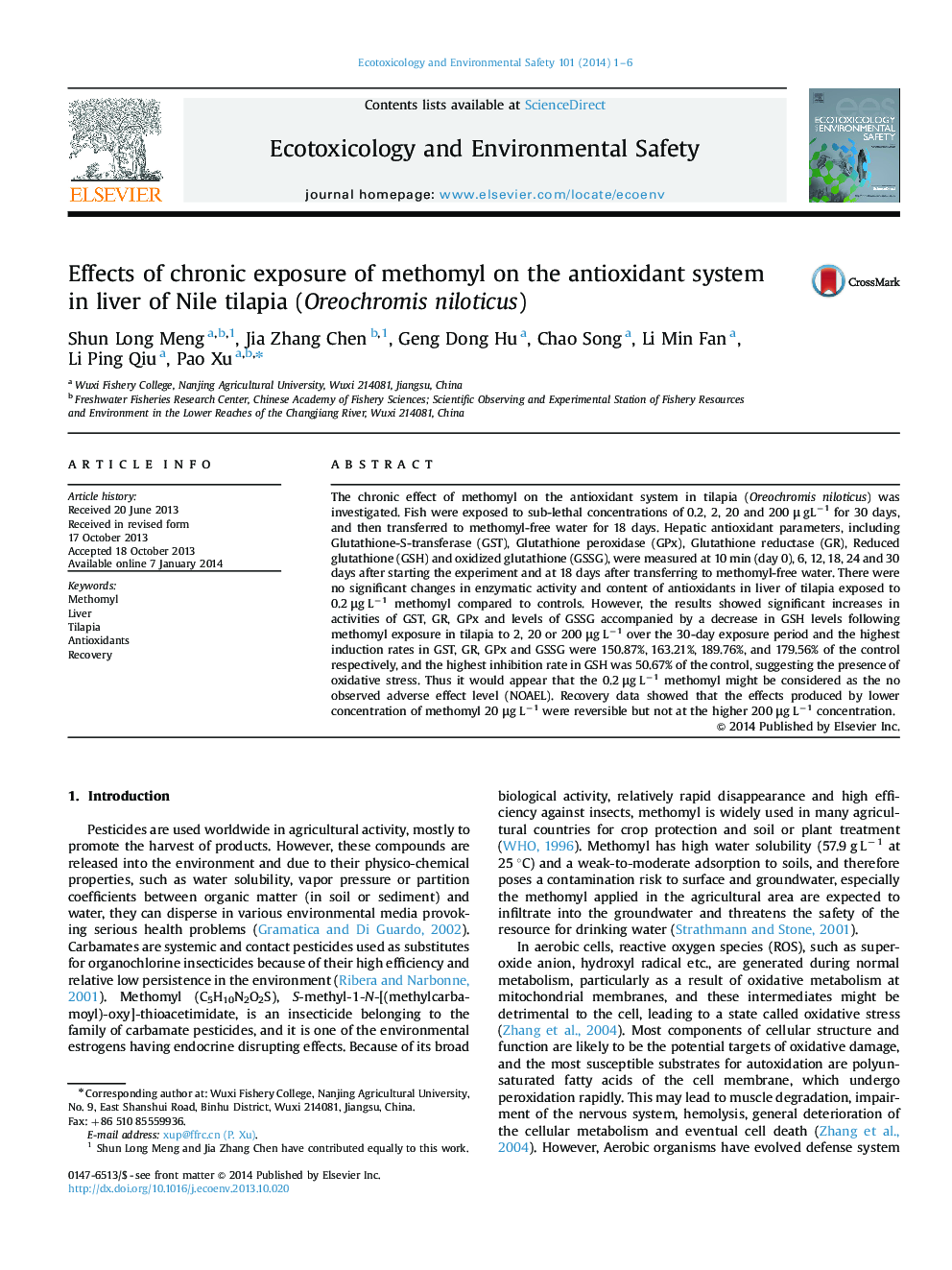| کد مقاله | کد نشریه | سال انتشار | مقاله انگلیسی | نسخه تمام متن |
|---|---|---|---|---|
| 4420204 | 1618962 | 2014 | 6 صفحه PDF | دانلود رایگان |

• Chronic effect of methomyl on tilapia hepatic antioxidant system was investigated.
• GST, GPx, GR, GSH and GSSG in tilapia liver were measured at different exposure day.
• Recovery pattern was researched at 18 days after transferring to methomyl-free water.
• 0.2 μg L−1 might be suggested as the threshold dose for no effect.
• 200 μg L−1 might be the threshold dose for unreversible oxidative damage.
The chronic effect of methomyl on the antioxidant system in tilapia (Oreochromis niloticus) was investigated. Fish were exposed to sub-lethal concentrations of 0.2, 2, 20 and 200 μ gL−1 for 30 days, and then transferred to methomyl-free water for 18 days. Hepatic antioxidant parameters, including Glutathione-S-transferase (GST), Glutathione peroxidase (GPx), Glutathione reductase (GR), Reduced glutathione (GSH) and oxidized glutathione (GSSG), were measured at 10 min (day 0), 6, 12, 18, 24 and 30 days after starting the experiment and at 18 days after transferring to methomyl-free water. There were no significant changes in enzymatic activity and content of antioxidants in liver of tilapia exposed to 0.2 μg L−1 methomyl compared to controls. However, the results showed significant increases in activities of GST, GR, GPx and levels of GSSG accompanied by a decrease in GSH levels following methomyl exposure in tilapia to 2, 20 or 200 μg L−1 over the 30-day exposure period and the highest induction rates in GST, GR, GPx and GSSG were 150.87%, 163.21%, 189.76%, and 179.56% of the control respectively, and the highest inhibition rate in GSH was 50.67% of the control, suggesting the presence of oxidative stress. Thus it would appear that the 0.2 μg L−1 methomyl might be considered as the no observed adverse effect level (NOAEL). Recovery data showed that the effects produced by lower concentration of methomyl 20 μg L−1 were reversible but not at the higher 200 μg L−1 concentration.
Journal: Ecotoxicology and Environmental Safety - Volume 101, March 2014, Pages 1–6